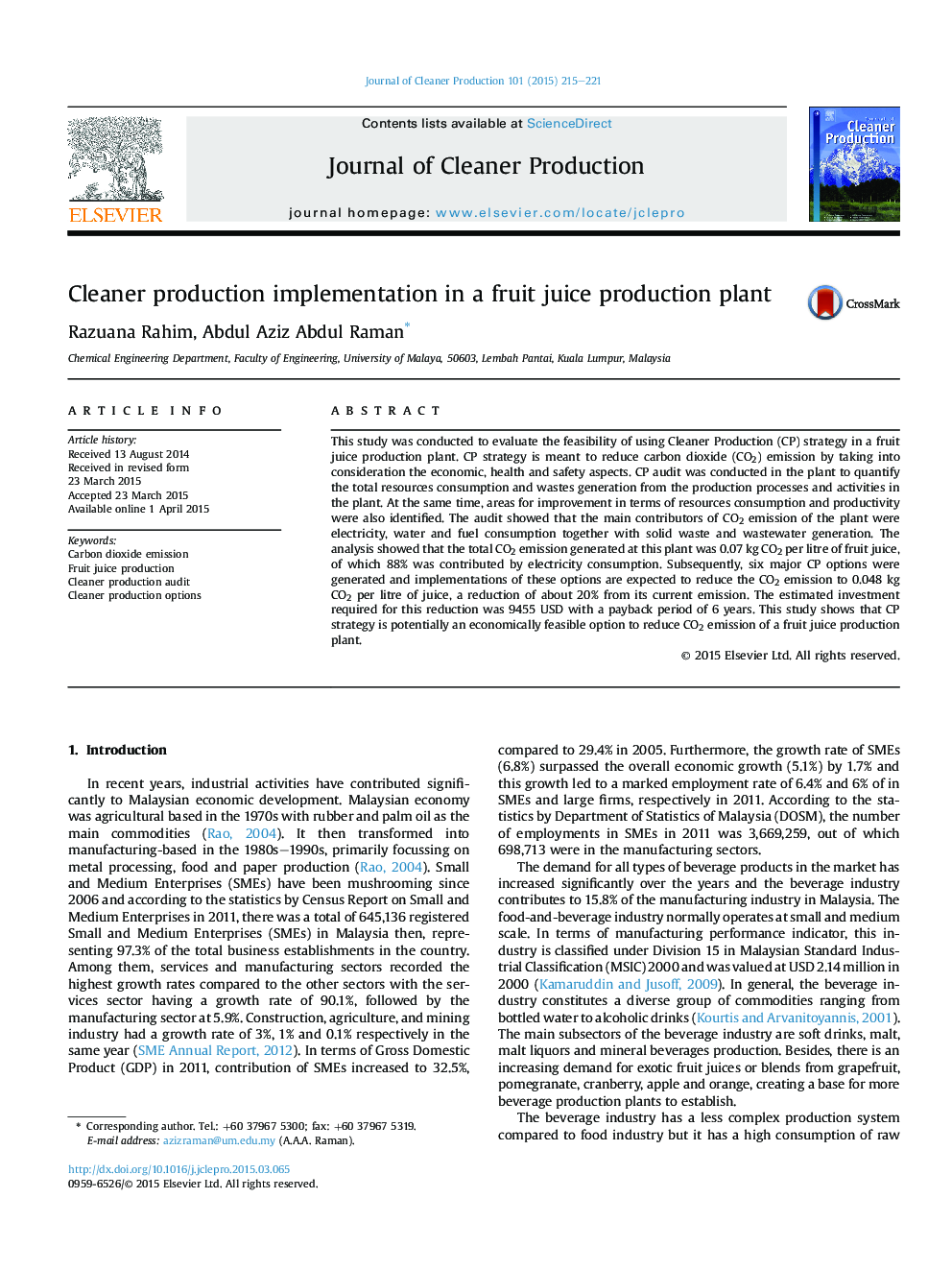| Article ID | Journal | Published Year | Pages | File Type |
|---|---|---|---|---|
| 1744591 | Journal of Cleaner Production | 2015 | 7 Pages |
•Application of CP auditing methodology to quantify CO2 emission generated.•Electricity, water, fuel, solid waste & wastewater are major CO2 contributor.•6 CP options were proposed with expected CO2 reduction of 20%.•Estimated payback period for the relevant investment was 6 years.
This study was conducted to evaluate the feasibility of using Cleaner Production (CP) strategy in a fruit juice production plant. CP strategy is meant to reduce carbon dioxide (CO2) emission by taking into consideration the economic, health and safety aspects. CP audit was conducted in the plant to quantify the total resources consumption and wastes generation from the production processes and activities in the plant. At the same time, areas for improvement in terms of resources consumption and productivity were also identified. The audit showed that the main contributors of CO2 emission of the plant were electricity, water and fuel consumption together with solid waste and wastewater generation. The analysis showed that the total CO2 emission generated at this plant was 0.07 kg CO2 per litre of fruit juice, of which 88% was contributed by electricity consumption. Subsequently, six major CP options were generated and implementations of these options are expected to reduce the CO2 emission to 0.048 kg CO2 per litre of juice, a reduction of about 20% from its current emission. The estimated investment required for this reduction was 9455 USD with a payback period of 6 years. This study shows that CP strategy is potentially an economically feasible option to reduce CO2 emission of a fruit juice production plant.
